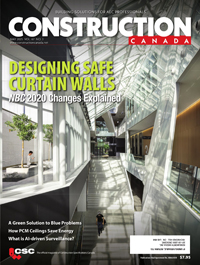Improving building performance with sustainable metal roofing
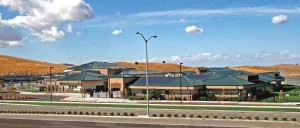
Photo courtesy McElroy Metal
Another important value from research at ORNL is the comparison of metal with other types of roofing for degradation. Results of a study conducted by the Cool Metal Roofing Coalition (CMRC) in co-operation with ORNL, show that over a three-year period, a white polyvinylidene fluoride (PVDF) painted roof can lose less than five per cent of its solar reflectance because it sheds dirt more readily than many other roof products. Other materials may lose more than 40 per cent over the same three-year period primarily because they soil and retain dirt. (For more information, visit coolmetalroofing.org).
The Cool Roof Rating Council (CRRC) has also been very active in this area. Although its work began as a result of California’s Title 24, Energy Efficiency Standards for Residential and Non-residential Buildings, CRRC has members throughout North America. The methodology developed by CRRC for measuring radiative properties of roofing products has been referenced in many other codes and standards. (Additional information can be found at www.coolroofs.org).
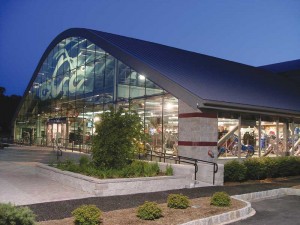
Photo courtesy Englert Inc.
Engineering options
Metal roofing offers a great deal of flexibility in engineering to achieve both design and performance objectives in different environments. In cooler climates where heating dominates, cool roofing objectives may be met with unpainted metal roofs. In warmer climates where high reflectance and emittance are desirable, a pre-painted metal roof is the best solution.
Metal roofs are also very compatible with integrated solar energy systems. Solar panels can be mounted on a metal roof without penetrating the roof surface. Since metal is highly durable, it can outlast most solar technology systems that will degrade and wear out after 25 to 30 years, which occurs within the metal roof’s estimated service life.
Additional considerations regarding solar systems relate to the climate in the building’s location. Solar panels ‘work’ based on the amount of sunlight in the area, which is known as the solar insolation. Climate has very little effect on the photovoltaic (PV) units, except when snow and ice are prevalent. Rooftop PV units covered with snow for extended periods will suffer in their ability to generate electricity because the sunlight is not reaching the PV surface. Once the snow melts off the panels, the PV units will once again generate electricity. However, the mechanical attachment of PV units to metal roofing is not affected by climate.
Metal roofs can also be installed over existing flat roofs to eliminate tear-off, diverting roofing debris from the solid waste stream and keeping it out of the landfill. This method of retrofitting a roof with metal can also create a ventilation cavity to help cool or heat a building. This phenomenon referred to as above-sheathing ventilation creates a chimney effect that can draw in cooler air at the eave and dissipate heat beneath the new roof surface by exhausting it at the ridge vent. Alternatively, the heated air from the ASV can be directed back into the building for space or process heating as needed.
Another benefit of the natural convective cooling created by ASV is the ability to remove excess moisture from beneath the metal roof. In cool weather conditions, the air layer from ASV can act as an insulating layer to prevent heat loss through the roof system. In locations where there is both warm and cool weather, use of ASV with retrofitting can minimize both heat gain and heat loss with the same system.
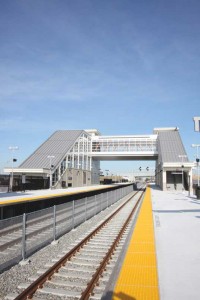
Photo courtesy Englert Inc.
ORNL studies have shown how ASV can help reduce heat gain through the roof assembly by up to 45 per cent when combined with a cool roof surface. (See “A Compilation of Home Energy Assessments for Cool Roofs, Above-sheathing Ventilation, Radiant Barriers, and Other Attic Strategies,” led by William Miller, Andre Desjarlais, and Jan Josny, PhD, of Oak Ridge National Laboratory (ORNL), and presented in 2010 at the THERM XI Conference in Clearwater, Florida).
The need to create more energy-efficient buildings is often motivated by changes in building codes and standards, as well as rebates and incentives from utilities or government entities. Many incentives exist for cool metal roofs, so it is important to research what is available in each building’s locale. (Visit oee.nrcan.gc.ca/corporate/incentives.cfm).
Benefits in LEED
For projects seeking certification under Canada Green Building Council’s (CaGBC’s) Leadership in Energy and Environmental Design (LEED) program, a building using metal roof components can qualify for specific points in this process.
The use of a cool metal roof can qualify for one LEED point under Sustainable Site (SS) Credit 7.2, Heat Island Effect-Roof, if the roof meets minimum solar reflectance index (SRI) values and covers a minimum of 75 per cent of the roof surface area. A low-slope roof (< 2:12) must have a minimum SRI of 78, and a steep-slope roof (> 2:12) must have a minimum SRI of 29. In practical terms, to qualify for these SRI values, pre-painted metal roofs must have a reflectance of 66 per cent or greater for a low-slope and 30 per cent or greater for a steep-slope.
Typically, metal in roof installations contains at least 25 per cent recycled content. Depending on the specific metal substrate, the recycled content can be as much as 80 per cent. This can raise the building’s overall average recycled content and help the building qualify for up to two points under Material and Resources (MR) Credit 4, Recycled Content.
Additionally, the metal roof panels composed of steel, aluminum, copper, or zinc are 100 per cent recyclable at the end of the roof’s service life. Any scrap generated during construction is likewise fully recyclable provided it is properly segregated. This can allow the building to qualify for up to two LEED points under MR Credit 2, Construction Waste Management.
When a building is renovated, an existing metal roof is often capable of performing well for many more years. This fact can help that building project to qualify for up to two points under MR Credit 1.1, Building Reuse.
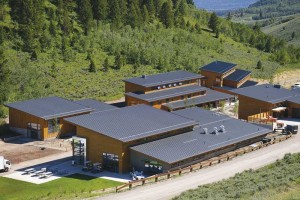
Photo courtesy MBCI
Metal roofs can also help improve water efficiency in buildings. Since metal roofing is a smooth, inert, and dirt-resistant surface, it provides an excellent surface from which to capture rainwater. Therefore, a building project that incorporates a rainwater harvesting system integrated with the metal roof can use rainwater inside the building for greywater applications or for landscape irrigation. This approach can qualify the building for up to seven points under Water Efficiency (WE) Credit 1, Water Efficient Landscaping, Credit 2, Innovative Wastewater Technologies, and Credit 3, Water Use Reduction.
Cool metal roofs also contribute to the calculated energy reductions in buildings. As a result, buildings that use cool metal roofs can qualify for LEED points from the energy simulation calculations under Energy and Atmosphere (EA) Credit 1, Optimize Energy Performance.
Members of the metal industry are working on calculating the embodied energy in cool roofs and are updating this information to provide a more accurate representation of lifecycle assessment (LCA) information. LCA is a technique to assess environmental impacts associated with all the stages of a product’s life from cradle to grave of the materials’ life.
Conclusion
Metal roofs are sustainable, durable, and have a low impact on the environment during the building use phase. The use of metal roofing can help a building project reduce solid waste in construction, rein in energy consumption in all climates, and improve the air quality and water efficiency in buildings and their surroundings. They can be applied to all types of buildings in any climate and offer various esthetic options and operating cost benefits.
Scott Kriner, CSI, AIA, LEED AP, serves as the technical director for The Metal Initiative (TMI) and the Metal Construction Association (MCA) in Glenview, Ill. He has 30 years of experience in the metals and metal construction industries. Kriner can be reached via e-mail at skriner1@verizon.net.







